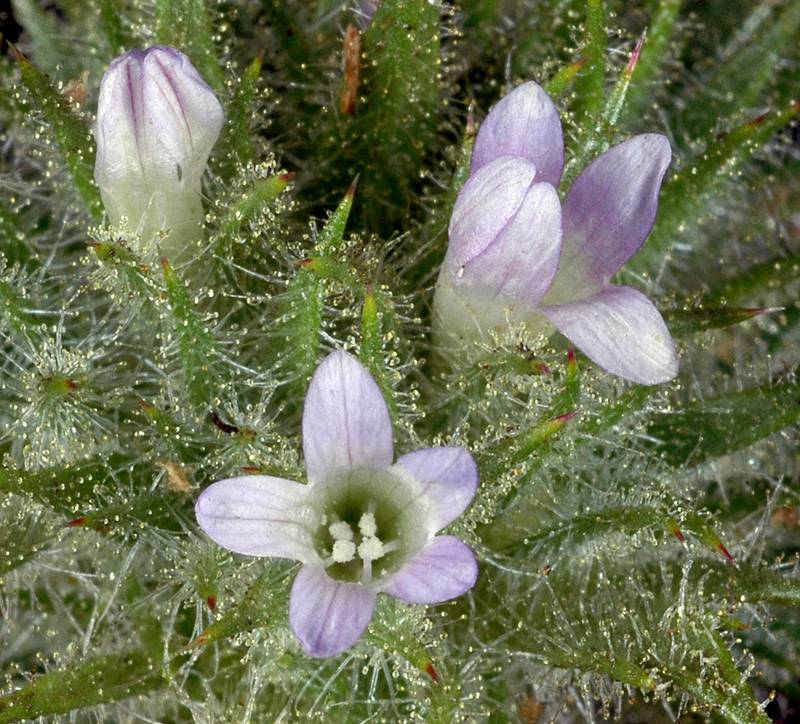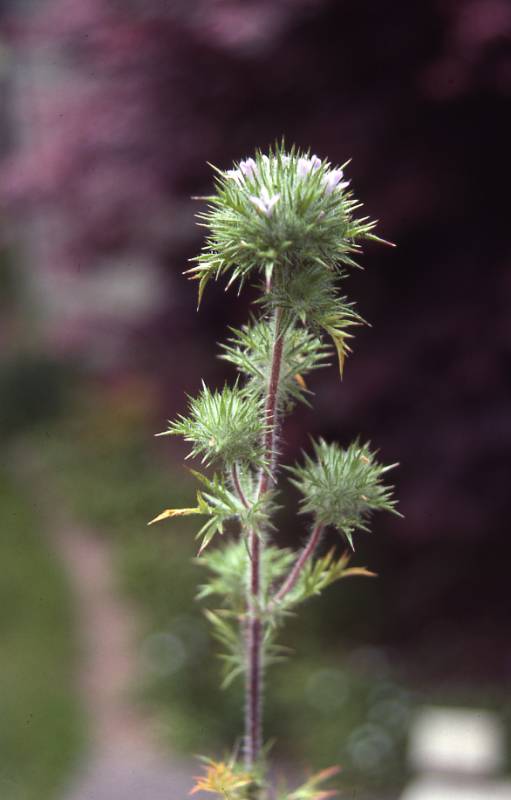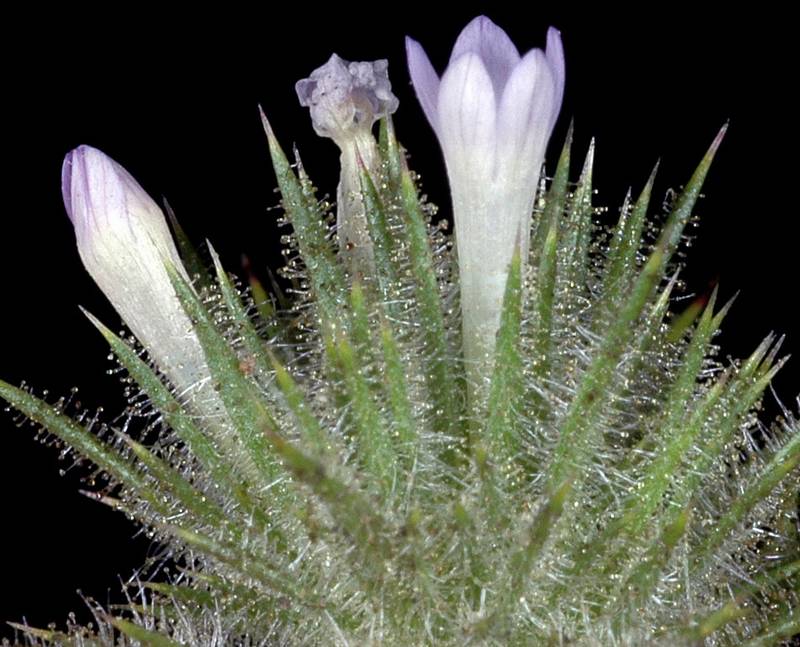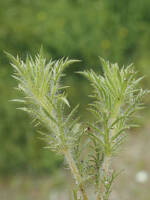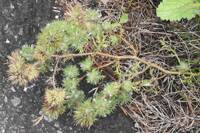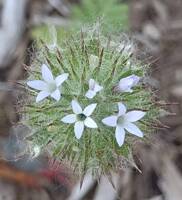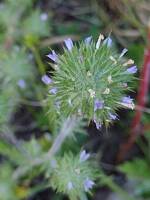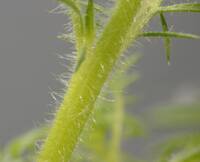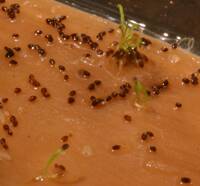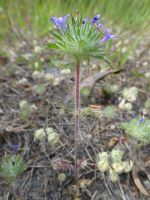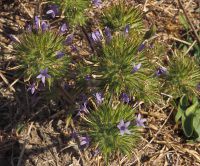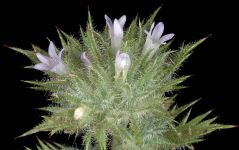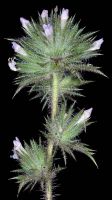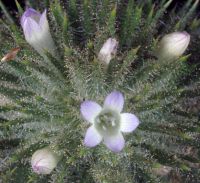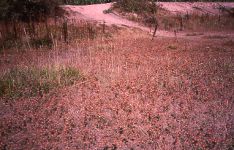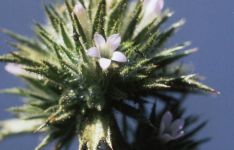Distribution: Occurring west of the Cascades crest in Washington; southern Vancouver Island and southwestern British Columbia to California.
Habitat: Open, seasonally moist places, mostly at low elevations.
Flowers: June-September
Origin: Native
Growth Duration: Annual
Conservation Status: Not of concern
Pollination: Bees, flies
Erect, simple or moderately branched, glandular-hairy annual up to 4 dm. tall, smelling of skunk.
Leaves firm and spiny, pinnatifid or bipinnatifid, up to 6 cm. long, the terminal segment not elongate.
Inflorescence of dense, leafy-bracteate heads terminating the stem and branches, the heads often 3 cm. thick, the bracts pinnatifid; calyx 8-14 mm. long, the 5 lobes nearly equal, mostly entire; corolla pale to deep blue, about equal to the calyx, the 5 lobes 2-3 mm. long, three veined; filaments 1-4 mm. long, inserted at least 2.5 mm. below the sinuses of the corolla; stigmas 3; ovary 3-celled, superior.
Inflorescence of dense, leafy-bracteate heads terminating the stem and branches, the heads often 3 cm. thick, the bracts pinnatifid; calyx 8-14 mm. long, the 5 lobes nearly equal, mostly entire; corolla pale to deep blue, about equal to the calyx, the 5 lobes 2-3 mm. long, three veined; filaments 1-4 mm. long, inserted at least 2.5 mm. below the sinuses of the corolla; stigmas 3; ovary 3-celled, superior.
Publication: Bot. Beechey Voy. 368. 1839.
PNW Herbaria: Specimen records of Navarretia squarrosa in the Consortium of Pacific Northwest Herbaria database
WA Flora Checklist: Navarretia squarrosa checklist entry
OregonFlora: Navarretia squarrosa information
E-Flora BC: Navarretia squarrosa atlas page
CalPhotos: Navarretia squarrosa photos

